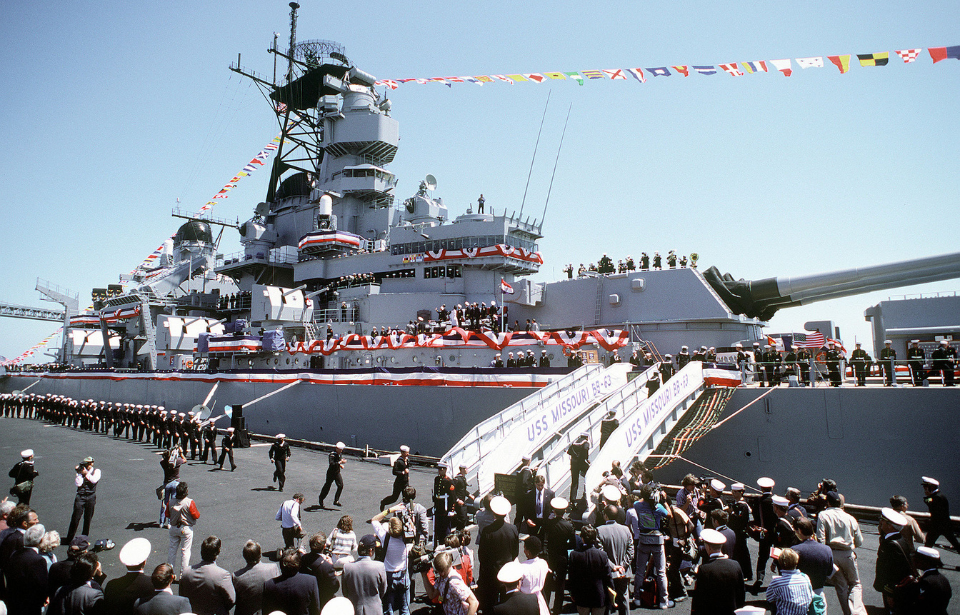The USS Missouri (BB-63) was a bit late to the party. Having been finished in January 1944, it was the final American battleship to participate in the Second World War. Nevertheless, the vessel holds a significant place in American history, serving as the venue for the Japanese surrender in September 1945. This historic event marked the official conclusion of the global conflict that had gripped the world for six long years.
The United States wanted to counter Japan
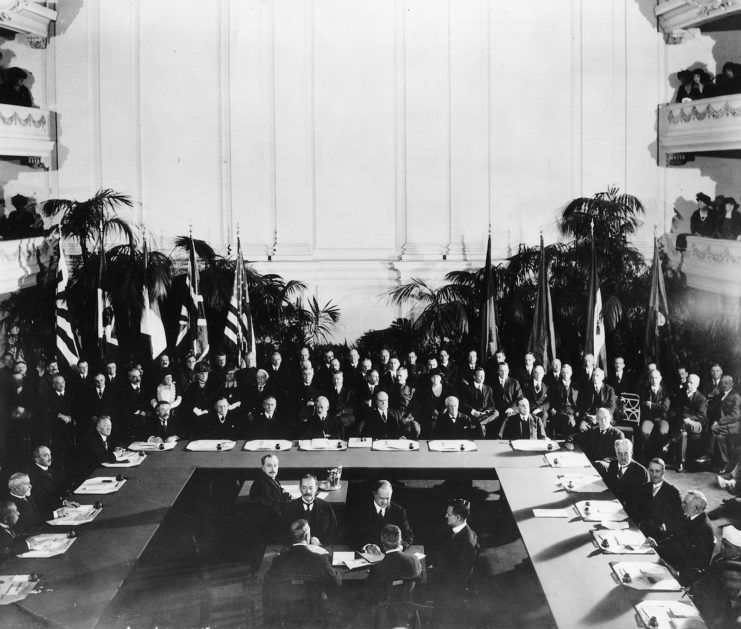
While the United States was in peacetime in the 1930s, military officials felt a war with Japan was possible. In response, the Navy was tasked with creating a new battleship design. Specifically, the Americans wanted a ship that could counter Japan’s Kongō-class battlecruisers.
Following the First World War, the world’s powers signed the Washington Naval Treaty, which placed limitations on how large newly-constructed ships could be. This was followed by the Second London Naval Treaty, which Japan refused to sign. This led to further negotiations, which allowed the US to build battleships up to 45,000 tons, as opposed to the previous limit of 36,000.
Construction of the USS Missouri
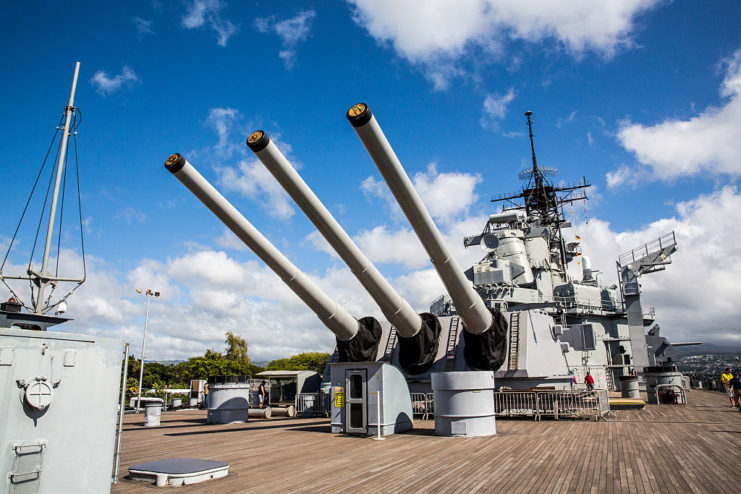
Upon the approval of plans, the order for the USS Missouri was placed in June 1940, and construction commenced the following January. The work on the Iowa-class battleship was successfully concluded in 1944, with 30,000 spectators bidding farewell.
Equipped with turbines, Missouri achieved an impressive top speed of 32.5 knots. Her formidable main battery comprised nine 16-inch .50-caliber Mark VII deck guns, while her secondary armament included 20 dual-purpose five-inch .38-caliber guns and 20 quadruple mounts for 1.6-inch Bofors guns, providing robust anti-aircraft defense. In addition to this firepower, Missouri boasted forty-nine 0.8-inch Oerlikon light AA auto-cannons positioned along her length.
After a shakedown cruise in the vicinity of the Chesapeake Bay, the battleship journeyed to Hunters Point Naval Shipyard in San Francisco, California, where she underwent modifications to serve as a fleet flagship.
The USS Missouri was the site of the Japanese surrender
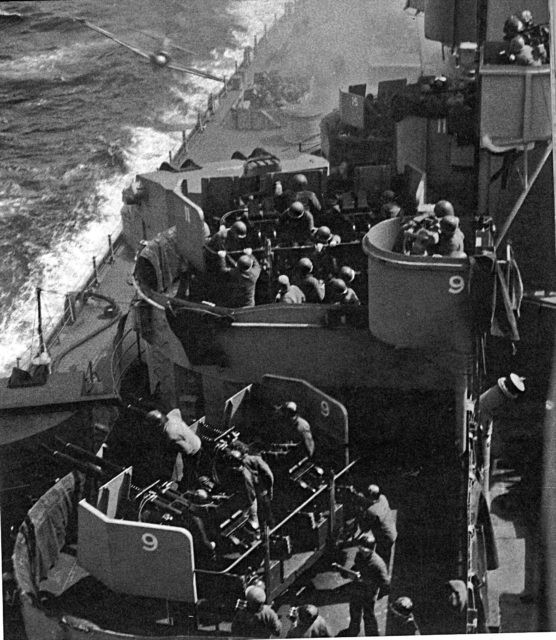
After entering service, the USS Missouri was sent overseas as part of Task Force 58, arriving near Tokyo in January 1945. The battleship immediately took part in an attack on the Japanese city, with her armaments providing anti-aircraft support. Following this, she continued to perform strikes against Japan, including during the Battle of Iwo Jima.
Not long before the Battle of Okinawa, Missouri and two other US vessels were transferred to Task Force 59, tasked with bombarding the southern part of Okinawa. This was to distract the Japanese forces from the planned invasion of the island’s west side. In April 1945, Missouri was the victim of an attack by kamikaze aircraft, but only suffered cosmetic damages. Days later, another kamikaze pilot struck the vessel, injuring two crewmen.
On September 2, 1945, Missouri became the site of the Japanese surrender. The formal ceremony was attended by Gen. Douglas McArthur and Adm. Chester Nimitz. On the Japanese side, Minister of Foreign Affairs Mamoru Shigemitsu was present.
Service during later US-involved conflicts
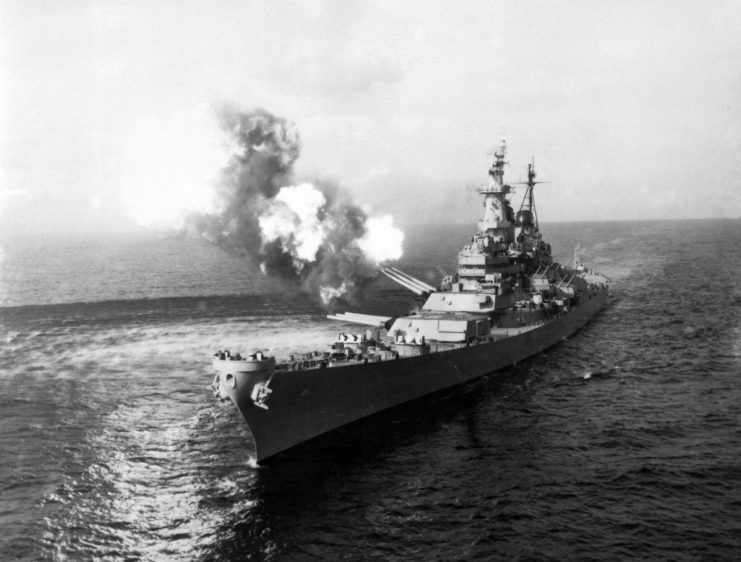
The USS Missouri was, again, pressed into service in 1950, upon the outbreak of the Korean War. Initially part of the Pacific Fleet, the vessel was the first US battleship to arrive in Korean waters, and throughout the conflict bombarded shorelines and acted as a carrier escort.
In 1955, she was sent to Puget Sound for decommissioning, and over the next few decades was moored in Seattle, where she served as a popular tourist attraction. Approximately 250,000 guests visited Missouri each year.
In 1984, Ronald Reagan‘s administration looked to rebuild the Navy’s fleet, as a not-so-subtle threat to the USSR. Missouri was reactivated the same year and upgraded with the latest weapons and technology. This included the addition of four Mk 141 quad cell launchers for RGM-84 Harpoon anti-ship missiles, a quartet of Phalanx 0.8-inch .76-caliber Close In Weapon System rotary cannons and eight Mk 143 Armored Box Launcher mounts for Tomahawk missiles.
Three years later, Missouri was sent to Kuwait as part of Operation Earnest Will, having been outfitted with 25 mm chain guns and 40 mm grenade launchers. In January 1991, she arrived in the waters off the Persian Gulf in support of America’s efforts during Operation Desert Storm, tasked with destroying sea mines and providing fire support.
The USS Missouri‘s retirement and legacy
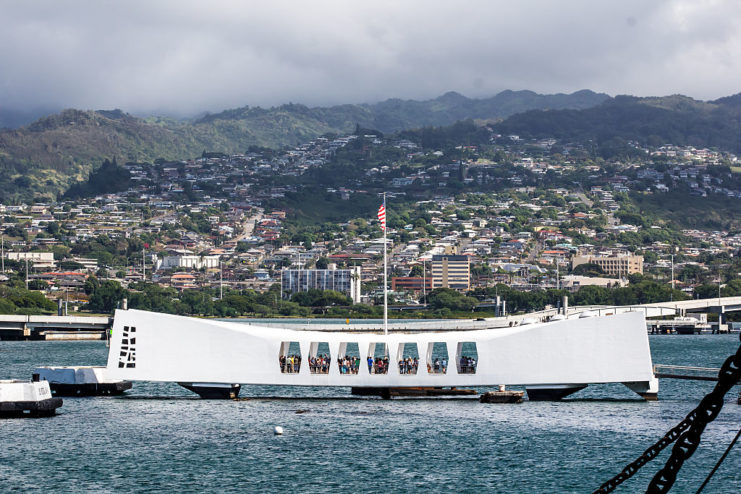
Ronald Reagan brought the USS Missouri out of retirement as a check against the Soviet Union. However, by the mid-1990s, the USSR had dissolved and Russia was no longer a threat. As such, the US military was looking to cut costs, forcing the battleship back into retirement.
More from us: U-111: Wreck of Famed WWI-Era German U-boat Discovered Off the Coast of Virginia
At first, Missouri returned to Puget Sound, before being sent to Ford Island in 1998. That’s where she remains to this day, docked some 500 feet from the USS Arizona Memorial. Missouri faces the memorial, in a position symbolizing a permanent watch over those who lost their lives during the Japanese attack on Pearl Harbor in December 1941.
